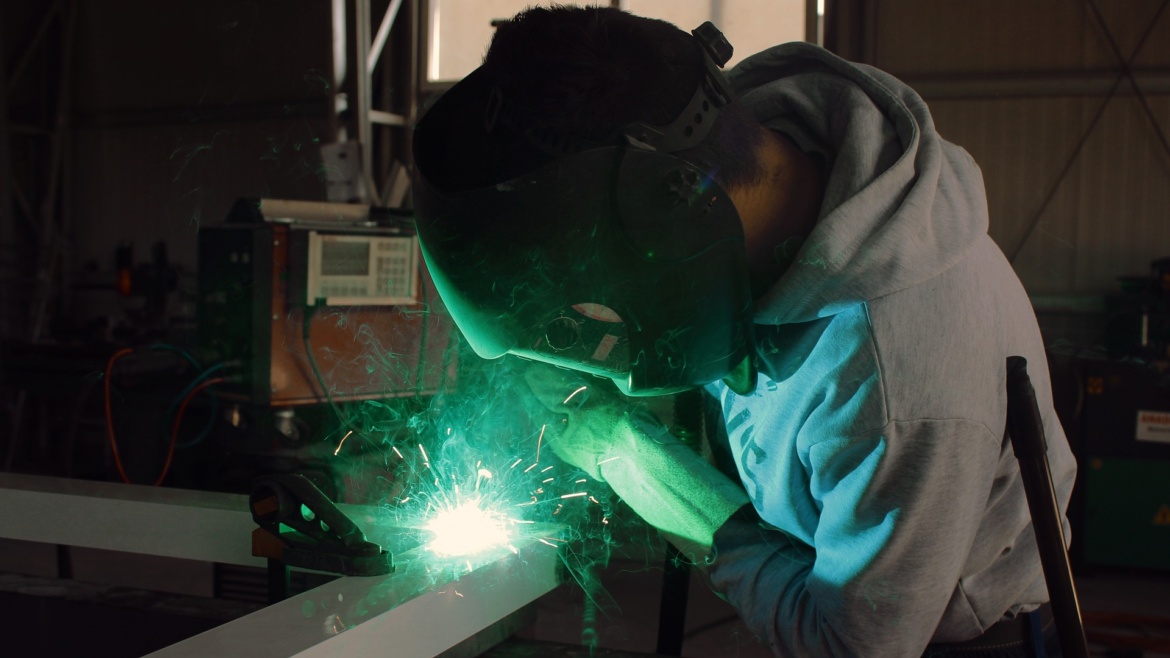Practice is the best way that you will be able to weld faster. However, there are a few tips that you can follow to achieve a strong weld quickly. Unless the situation requires a fast-moving weld, we believe that going at your own pace is the way to go.
Setting up correctly
The correct set up can be crucial to how fast a welder can work. Ensuring that you have the correct welding setup, welder settings and electrode selection will help you save time on your welding project. By testing these on a piece of scrap metal, it will save you time in the long run.
Welding positions
Flat-Position Welding
Most welders will know that welding in horizontal position is possibly the most easiest and fastest way to weld. A Flat position weld is not as difficult to maintain. However, in order to create a suitable weld, the angle of the tip, the flare motion and the welding flame position above the molten puddle, all should be carefully maintained.
Downhill Welding
Compared to Uphill welding, downhill welding may be faster, however it is not always easier. What you need to consider is if it is worth sacrificing durability and strength to achieve a faster weld. If you are using a thin metal for your project a downhill weld shouldn’t make the weld weaker. In fact, it could even be the correct technique for the job.
Welding Equipment
Core Wire Feed
If you are a professional welder, a core wire feeder will speed up your TIG welding by adding filler metal through an automated process. A core wire feeder therefore allows the welder to work with both hands as well as enabling you to maintain a constant flow of wire into the welding puddle.
Helium Shielding Gas
Welders will use helium as a shielding gas in order to increase the speed and penetration into the metal. However, this shielding gas makes it harder to strike an arc. As a result, helium can produce a lower quality weld due to the varying arc length.
Electrodes
Using the right electrode when welding is a simple way to decrease your welding time. There are three types of electrodes that can be used when stick welding, these include: fast-follow, fast-fill and fill-freeze. Each of these electrodes have their own advantages, a fast-fill electrode allows welders to work faster as the electrodes are able to melt quickly.
TIG Welding
Preheating
When TIG welding with either magnesium or aluminium, you can improve both the welding speed and penetration of the weld. This can be achieved by simply preheating the work surface area after it has been cleaned, before you start welding.
Pulsed Currents
By working in pulsed current mode, TIG welders can increase both the quality and speed of the
weld. Using this method allows you to fuse the metals together using the higher pulse current. Then by converting to a lower level background current you can cool and solidify the weld.
MIG Welding
MIG welding can provide a cleaner and faster weld which MIG welders can apply to various types of metals as well as aluminium and other softer metals. The only downside to MIG welding is its complexity. This is made up by a steady flow of inert gas, direct currents and a precise control of the torches.
Overall we believe that the best tip for a faster weld process is practice. By focusing on perfecting your technique, you will be able to create a clean strong weld in no time at all.
For more information on Welding Techniques and Equipment contact WIRS – The West Midlands Welding Supplies Specialist.

